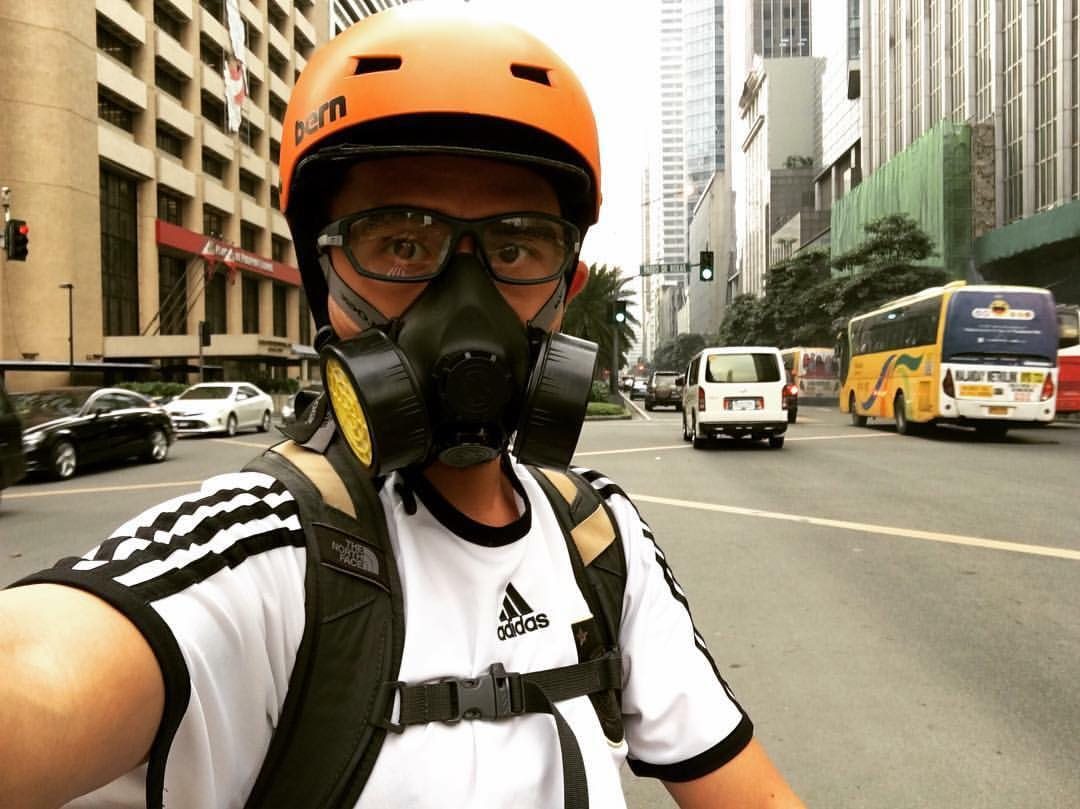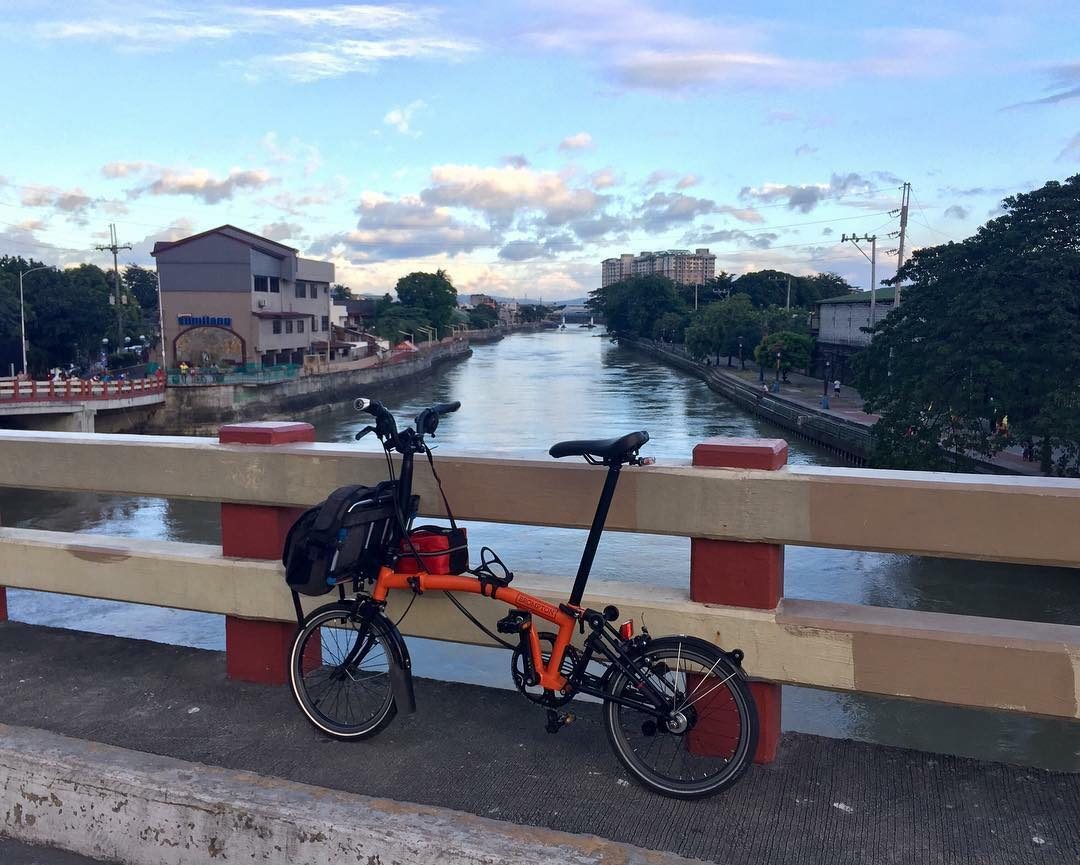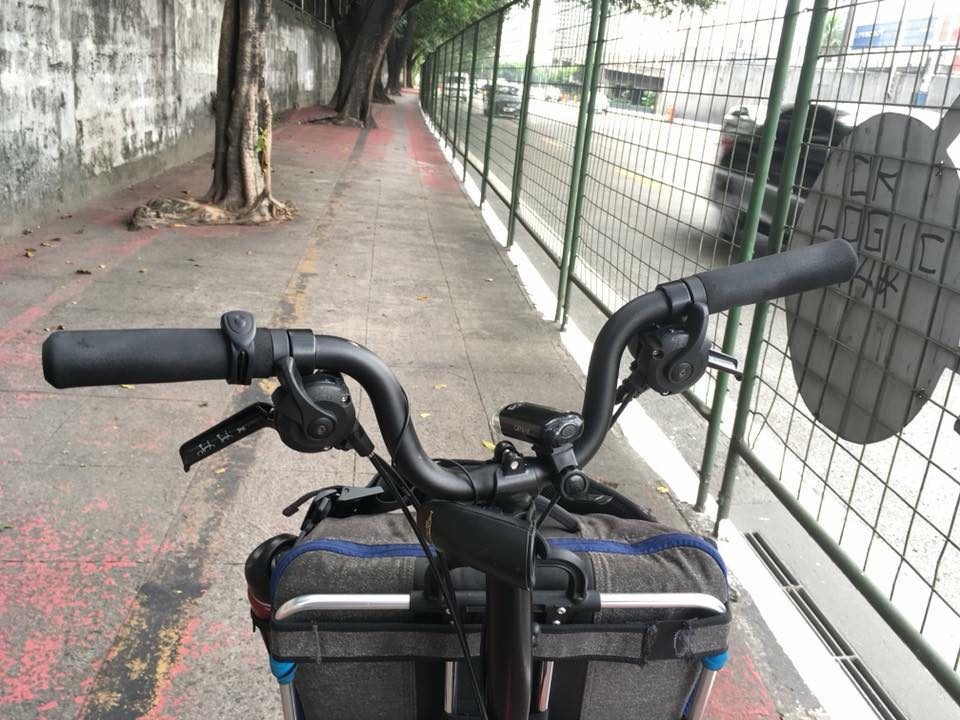SUMMARY
This is AI generated summarization, which may have errors. For context, always refer to the full article.

MANILA, Philippines – The state of the public commute in Metro Manila has become worse over the past few years, forcing some commuters to choose an alternative mode of transportation for their daily travel to work.
This alternative, however, doesn’t mean carpooling or hailing rides on Grab or Angkas.
Aldrin Pelicano, 35, turned to biking in 2014, cycling from his home in the eastern side of Pasig City to Ortigas Center to “improve his quality of life.”
“Nagsawa na ko (I got tired of public transportation),” Pelicano told Rappler.
“I’m a father of two kids who decided to bike commute, because it made my life so much better,” he said.
Those living in the East know just how bad the state of public commute it is there. “East Ortigas” – as they call that side of the city now – is the gateway to Rizal and serves as an alternative route for those going to Marikina City or Antipolo City.
During rush hour, jeepneys are overloaded with some 3 or 4 passengers seated on benches in the middle of the vehicle, while about 4 males hitch at the back apart from the fare collector. Of course, the buses are already packed too.
This was Pelicano’s daily commute then. Most of the time, he would be one of those males hitched at the back of the jeepney enduring his 4-kilometer ride.
“Palaging sabit. Palaging siksikan. At lagi akong late. Ang trabaho ko, 8 am, pero darating ako 9 am. Pero ang lapit-lapit lang. Kung walang-wala na talaga akong masakyan, nasubukan kong maglakad. Nakakapagod,” he told Rappler.
(I always hitch. I always fit my way through. And I’m always late. My work starts at 8 am but I arrive at 9 am. If you think about it, it’s really near. If I can’t find a ride, I walk. It’s very tiring.)
This brought him to start a daily journey pedaling through metropolitan Manila’s traffic, which eventually inspired him to share to his learnings online.
Making the shift
The sorry state of public transportation, the undignifying commute, and the desire to spend more time with his son and daughter pushed Pelicano to shift to bike commuting.
“I only rode a bike once in my life, perhaps during high school, but not for commuting. I didn’t have a bike. I didn’t really bike. Naglakas loob lang ako (I just took the courage to do so),” he said.
After finally deciding to make the shift, Pelicano, who worked as a program manager in an Australian firm then, said he looked up for groups in Facebook to read about biking.
He started reading about folding bikes, which for him, would “make sense” as he wanted to be able to bring it inside the building where he works.
In August 2014, he joined the Facebook group of Tiklop Society of the Philippines (TSP), a non-profit organization that aims to “promote the use of folding bikes as a means to better oneself and achieve cleaner air and more liveable cities,” according to its description.
“I went one Sunday morning during their monthly general assembly. The people were nice and so I was encouraged to finally do it. I bought a bike,” Pelicano said.
Before braving the metro’s vehicular traffic, Pelicano posted on Facebook who can accompany him on his first bike commute to Ortigas.
“Sabi ko lang, ‘Pwede ba magpasama? Kung taga-Pasig kayo, magpapasama akong mag-commute. So one guy, si Christian, taga-Pasig din siya. And he works in Tektite. So ‘yung route na dinaraanan niya, sa Julia Vargas Avenue. Sinamahan niya ako once lang,” he shared.
(I just asked, ‘Can somebody come with me? If you’re from Pasig, I would like to ask if you can accompany me to [bike] commute. So one guy, Christian, he’s also from Pasig. And he works in Tektite. So his route was along Julia Vargas Avenue. He biked with me once.)
‘Not bike-friendly’
During his first months bike commuting, Pelicano tried to avoid pedaling along other motor vehicles on the streets.
Since he’s coming from the eastern side of Pasig, Pelicano had to cross C5 Road to reach Ortigas. He said he could’ve just biked through the U-turn slot across Tiendesitas to reach the central business district.
But he didn’t.
“Hindi ko pa kayang tumingin pagilid. So ang ginawa ko, binibitbit ko yung bike ko sa footbridge sa may Shell, tapos baba, at bike sa Julia Vargas Avenue. Lagi ako sa kabilang side. Counterflow ako every morning,” Pelicano said.
(I couldn’t check my view sideways. So what I did was, I carry my bike up to the footbridge near Shell, and then go down, and then bike again along Julia Vargas Avenue. I always ride at the other side. I do counterflow every morning.)
The road condition along Doña Julia Vargas Avenue wasn’t as great at that time too. Pelicano said that the asphalt overlay was an issue because it leaves a gap between the old and the new one, making the road uneven. He said it could be dangerous, as bikers might slip.
Another challenge was that the building where he used to work wasn’t friendly to bike commuters.

In 2011, the Pasig City government passed an ordinance promoting bike use. It also ordered private establishments to install bicycle parking racks within their premises.
Since there weren’t any bike racks at the office building, Pelicano had to park their bikes at a particular corner where all the other bikes are. Whenever he would bring his smaller folding bike to work, he would have to use the service elevator from the basement to reach the floor where he worked.
“One time, I had to squeeze my way in the service elevator. The building manager got mad at me and since then he didn’t allow me to bring my bike in the office. I felt really bad,” he said.
In November 2016, Pelicano switched jobs which made him report to work in Makati. This meant additional kilometers for him. From his daily bike commute of about 6 kilometers, it’s now about 13 kilometers.
Intermodal commute was not ideal too, as city buses don’t have compartments where he can place his bike.
“Sabi ng wife ko, kapag umayaw ako, eh paano ‘yung ibang manong, araw-araw? I realized ‘yung iba, wala talagang choice. ‘Yung iba gamit pa nila surplus bikes lang. So sinabi ko, kakayanin,” he told Rappler.
(My wife told me, that if I give up, what about the older men who bike everyday? I realized, others didn’t have a choice. Some even use surplus bikes only. So I said, I can do it.)
MNL Moves
Pelicano was the brain behind the Facebook page “MNL Moves,” where he shares tips on bike commuting, reviews on bicycle parts, or urban planning proposals that would benefit bikers.
He started the page in December 2017 when he was working on his Masters’ thesis for Urban and Regional Planning at the University of the Philippines.
“I read a lot of literature for my thesis and I thought, ‘Why don’t I just post it? Just so I can share my learnings?’ That’s how I started it,” he said.
As of writing, MNL Moves is followed by over 3,600 people and reaches over 200,000 people.
With the hopes of “paying it forward,” Pelicano shares videos of his ride, to serve as a guide to other people who want to explore biking in those areas.
As a licensed urban planner, Pelicano posts about low-cost interventions that the government can easily implement.
One of them is “bike boxes.” According to the National Association of City Transportation Officials, these are designated areas at a signalized intersection “that provides bicyclists with a safe and visible way to get ahead of queuing traffic during the red signal phase.”
Pelicano’s idea is for these to be painted at signalized intersections so bikers are easily identified.
“If there are bike boxes, it would greatly help bike commuters. At least they would know where they should go at signalized intersections, especially when they want to take a turn. Motorized vehicles will have to wait until the cyclists have safely crossed to the other side,” he told Rappler.
In one of his many posts about it, Pelicano shared his frustration about a comment, saying that “vehicles should be prioritized.”
“We got a long way to go Metro Manila. And it’s not even about bicycle policies and infrastructure. It’s about building a culture of bicycling, and walking, and/or other means of sustainable mobility,” he said in a post on October 2018.
In a recent post, Pelicano shared about a government official who would not buy his proposal of painting bike boxes, after explaining its benefits.
Building a culture
All of these challenges are easily managed if biking is a priority in the Philippines, but it is not – at least not yet.
For Pelicano, it takes a village to realize that.
“It’s really about building a culture. Of course, it starts with the self and eventually finding a community that can support you,” he told Rappler.
Government support is important too, he said, noting the experiences of other countries such as Netherlands that gives a premium on biking than other modes of transportation.
National and local governments launched initiatives in the past to promote biking in the country. But some initiatives seemed to be a band-aid solution to the lack of bicycle infrastructure in the country, with some bike lanes painted right in the middle of a sidewalk.
In some areas, it seemed like lip service, with some bike lanes blocked by electrical posts or trees along the road.

The Department of Public Works and Highways pledged to build more bike lanes across the country, incorporating this to new infrastructure projects. In February, DPWH opened a protected bike lane along the Laguna Lake Highway.
Other protected bike lanes can be found along Doña Julia Vargas Avenue in Pasig City and Senator Benigno S. Aquino Jr Avenue or Diversion Road in Iloilo City too, thanks to the initiative of these local governments.
In an opinion piece published on Manila Times, development economist and transport advocate Robert Siy said that it’s time for the Philippine government to support a “Bike, Bike, Bike program,” a play of words on the country’s infrastructure program “Build, Build, Build.”
“More cycling will benefit all Philippine cities, big and small. Low cost, pro-poor, quick-to-implement, environment-friendly, and health-promoting! If city mayors and national officials are looking for projects that can be delivered within the next 3 years, cycling infrastructure should be high on the list,” Siy said in his column.
Another expert even said that biking could also help reduce traffic congestion, as the shift would free up road space.
As the online discussion pushing the government to “move people, not cars” grow louder, Pelicano still thinks that action speaks louder than words.
“We want to translate our online presence into tangible and real-life actions, as we try to build better communities for ourselves, our loved ones,” Pelicano wrote in his Facebook page, inviting more people to bike to work. – Rappler.com
Add a comment
How does this make you feel?
There are no comments yet. Add your comment to start the conversation.